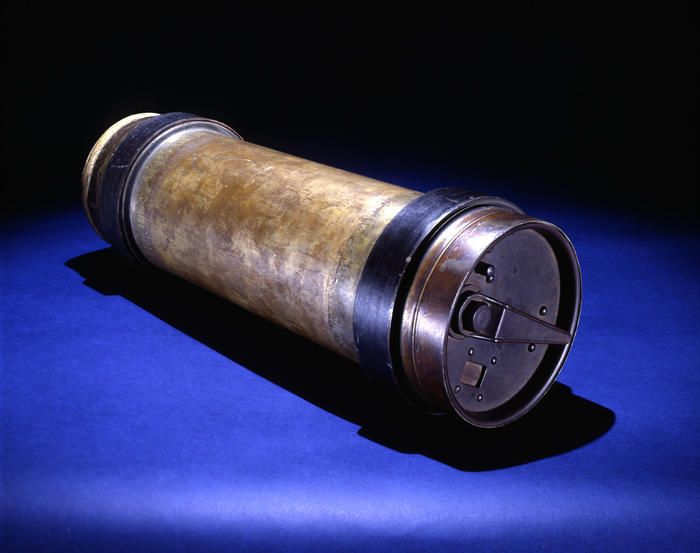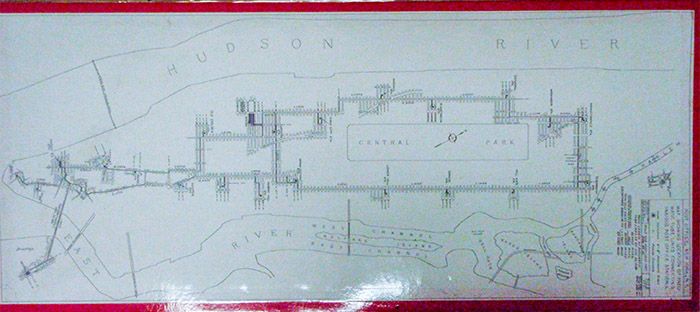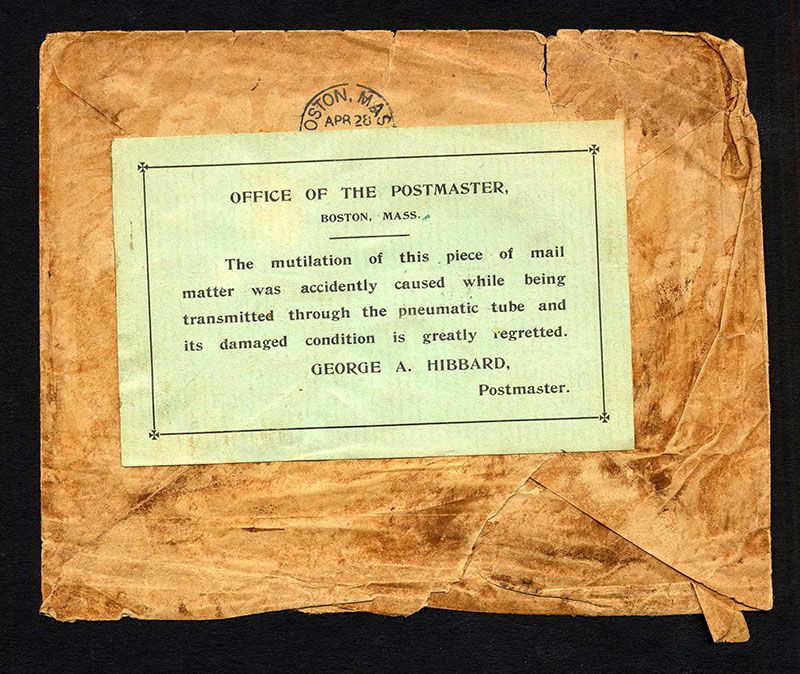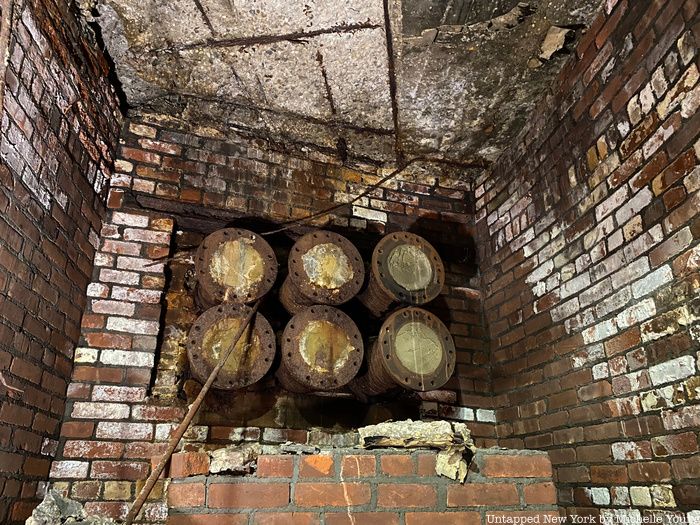Last-Minute NYC Holiday Gift Guide 🎁
We’ve created a holiday gift guide with presents for the intrepid New Yorker that should arrive just in time—


I’m often asked what my favorite weird/obscure fact about New York City was. Ironically, as the founder of Untapped New York, this question frequently proves difficult because there are just so many amazing things about this city. So I went back into my memory archives, thinking what about New York City impelled me to create Untapped New York. The pneumatic tube mail system is top on that list.

The first pneumatic tube mail system was installed in Philadelphia (sorry New York) in 1893. New York City’s came in 1897. Each tube could carry between 400 and 600 letters and traveled at 30-35 miles per hour. In its full glory, the pneumatic tubes covered a 27-mile route, connecting 23 post offices. This network stretched up Manhattan’s east and west sides, from Bowling Green and Wall Street, all the way north to Manhattanville and East Harlem.
Anecdotal stories indicate that the system may have extended into the Bronx, with sandwich subs reportedly being delivered via pneumatic tubes from a renowned subway shop in the Bronx to downtown postal stations. Maps at the National Postal Museum show proposed extensions to the Bronx and other areas within Manhattan, many of which were never completed. The system even crossed boroughs into Brooklyn (using the Brooklyn Bridge), taking four minutes to take letters from Church Street near City Hall to the General Post Office in Brooklyn (now Cadman Plaza). The pneumatic tube mail system in New York City is the subject of the inaugural episode of The Untapped New York Podcast available on Apple Podcasts, Spotify, and all of your favorite podcast apps.
The system, which was located 4 to 6 feet below the city streets, was created and owned by private companies, to which the city paid rent and labor. According to The Smithsonian National Postal Museum, “Installation of the tubes was problematic, with previously laid pipes for sewage and gas limiting the size and thus the amount and kind of mail a pneumatic tube could carry. Water table levels also presented difficulties. Later, the New York City system was purchased and operated by the U.S. Postal Service. Using power from old-school electric motors, made by the likes of General Electric and Westinghouse, air pressure was created by rotary blowers and air compressors. Each canister was labeled on the outside with its destination, but all the tubes had to come out at each station. So if a canister was destined for another station, it would be sent back again into the tubes and on its way.
To feed my growing obsession with pneumatic mail, I went to Washington D.C.’s Smithsonian National Postal Museum where I met with Manda Kowalczyk an Accessions Officer at the Museum. She pulled all the items in the Postal Museum that are connected to the pneumatic tube mail systems in America. One of them you can see on a regular visit to the museum is the pneumatic tube mail canister which is on exhibit. This 24 inch long, 8 inch wide metal canister could carry somewhere between 400 and 600 letters. And, it could have definitely fit a small black cat.

The Postal Museum also has several maps of the New York City pneumatic tube system, mostly from the 1930s and 40s. A 1947 map has some fun facts, including the time it took to send mail between the General Post Office and other stations, the number of canisters that went through the system daily (95,000), the pressure needed (3 to 8 lbs per inch), and the speed (5 tube carriers per minute and 30 mph). That year there were 26.969 miles of 2 way pneumatic tubes tubes. It even has the hours of operation: Weekdays from 5 AM to 10 PM, Saturday from 5 AM to 10 AM, and no service on Sundays and legal holidays. I love the thought of mail getting shot underground at 5 AM to arrive just time for the beginning of the work day.

According to Kate Ascher, author of The Works, “The high operating costs of the pneumatic system ultimately proved its downfall. By 1918, the federal government considered the annual rental payments ($17,000 per mile per annum) made by the post office to be ‘exorbitant’ and endorsed a new alternative with greater capacity–the automobile–as the delivery method of choice.” In New York City, a successful lobby by contractors led to the reinstatement of pneumatic mail service in 1922. A complete stop didn’t happen until 1953. Paris’ system, which covered 269 miles, continued for an additional 34 years (but was more limited in what it could carry–the pipes were only 2 inches diameter).

And what’s left of the pneumatic tubes? Not much, if at all. The location of the tubes within a city’s underbelly basically guaranteed its destruction once no longer in use. The only known remaining remnant of the pneumatic tube mail system is in the Old Chelsea Post Office at 217 W 18th Street, where tubes come through a wall in the basement. They sit at the end of a forgotten brick-lined hallway filled with office supplies. Kate Ascher also notes that there was a time when remnants of the pneumatic tubes were still being found, but not often any longer.
Some additional fun facts about the pneumatic tube mail system:
Check out more episodes of the Untapped New York Podcast in the player below!
Here’s where you can find remnants of the pneumatic tube network in New York City. Check out the rest of the episodes of The Untapped New York Podcast on Apple Podcasts, Spotify, or wherever else you get your podcasts!
Subscribe to our newsletter